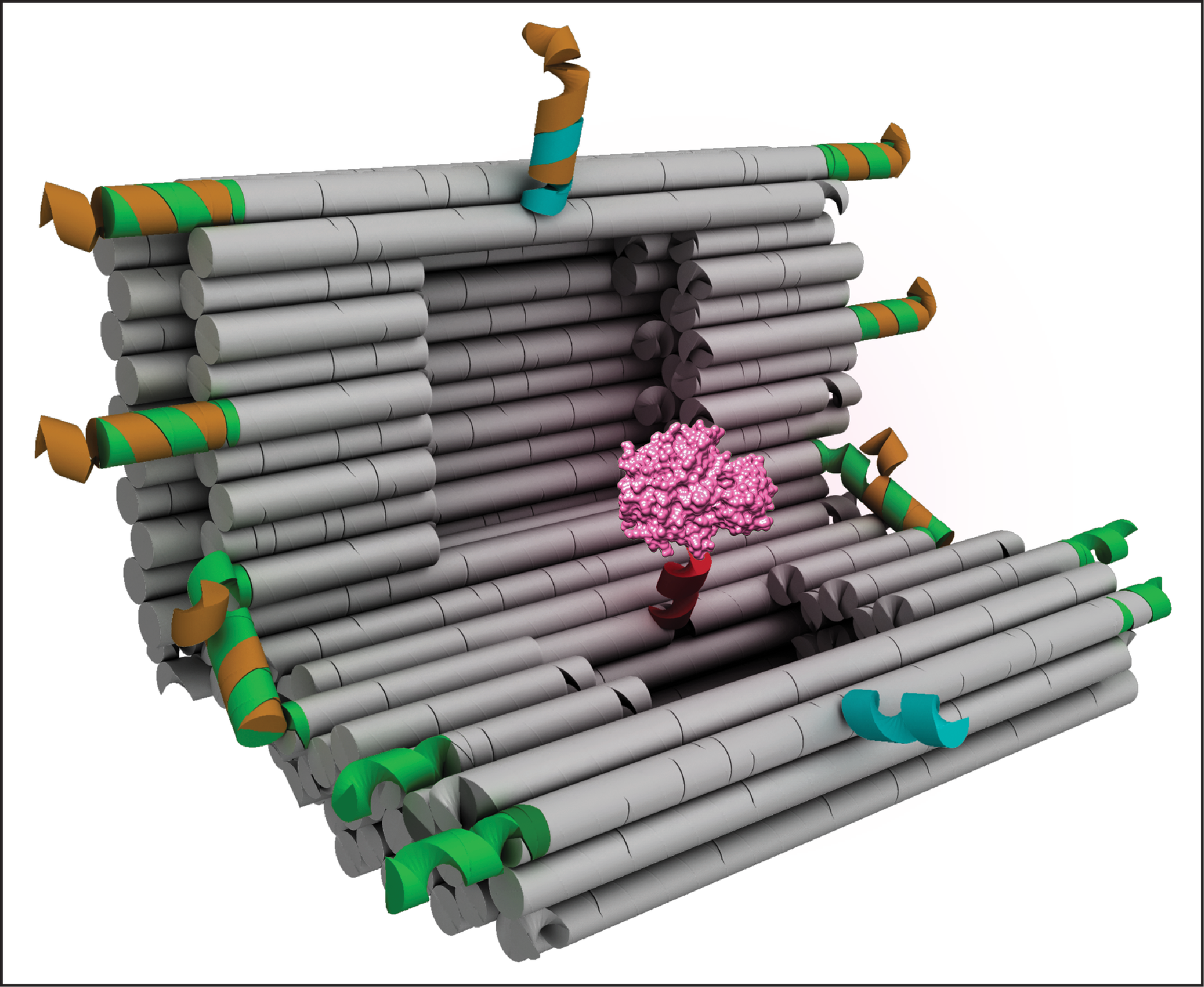New paper in Nature Communications on DNA origami nanostructures to control enzymes.
The research group of Assoc. Prof. Ebbe S. Andersen has recently published a paper entitled "Control of enzyme reactions by a reconfigurable DNA nanovault".

In the research paper recently published in Nature Communications, Guido Grossi et al. describe the design, construction and characterization of a DNA origami nanodevice - named "DNA Vault" - that can enclose an enzyme and regulate its catalytic activity.
When the structure is closed, the encapsulated enzyme is hindered from interacting with substrate molecules in solution. However, when a specific DNA signal is detected, the vault opens, allowing the enzyme to recognize its substrate, and thus triggering the catalytic reaction.
The DNA Vault introduces a general approach to control enzyme-substrate interactions by inducing conformational changes in a rationally designed nanodevice, and it may be used in the future to develop advanced applications in nano-medicine, biotechnology and synthetic biology.
To read the whole article (doi:10.1038/s41467-017-01072-8) go to Nature Communications.
The paper is also mentioned in RØMER, Aarhus University's popular science newsletter in the field of natural and technical sciences: http://scitech.au.dk/roemer/3-17/nanorobot-kontrollerer-enzymer/ (in Danish only)
You can also read about the research performed in the Andersen Lab for Biomolecular Nanodesign at
.For further information contact Ebbe Sloth Andersen at esa@inano.au.dk.
